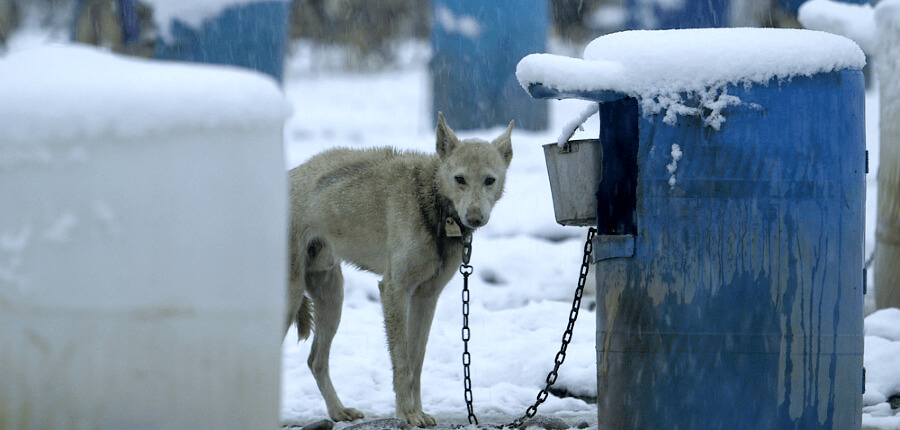Right now, we have vaccines globally available to combat a worldwide pandemic, yet less than 100 years ago, in 1925, it was dogs pulling sleds along an Alaska mail route who delivered an emergency supply of serum to quell a diphtheria outbreak in Nome. We’ve come so far in such a short period of time—how did that same lifesaving route become the Iditarod trail of death over the last half-century?
For the dogs forced to race about 100 miles a day for 10 days, the Iditarod has always been a matter of life or death. No records were kept in the early days of the Iditarod, but before the start of the 1997 race, the Anchorage Daily News reported that “as many as 34 dogs died in the first two races.” What has been documented is that more than 150 dogs have died in the Iditarod. The leading cause of death for dogs on the trail is aspiration pneumonia—caused by inhaling their own vomit. Up to half of the dogs who start the race don’t finish it, and during last year’s race, nearly 200 dogs were pulled off the trail because of exhaustion, illness, injury or other causes, leaving the remaining ones to have to work even harder.
The dogs are subjected to biting winds, blinding snowstorms and sub-zero temperatures, and they risk falling through treacherous ice into the frigid water. Even though the race can take up to two weeks, the official rules require that the dogs be allowed only 40 hours of rest—in total. Most states have laws that prohibit overdriving or overworking animals, but Alaska does not.
And there’s no respite off the trail. Most dogs live—if you can even call it that—on short chains with inadequate shelter. Exposés of dog-sledding operations owned by Iditarod mushers documented that arthritic, crippled and injured dogs were denied veterinary care; chained dogs had worn-down, raw, bloody paw pads from frantically running in tight circles around the plastic barrels that were their only “protection” from below-freezing temperatures; and dogs were dragged and injured, even killed, during training. Dogs who aren’t fast runners or who simply aren’t inclined to participate are discarded like defective equipment.
Look how far we’ve come since that 1925 serum delivery. Cockfighting and dogfighting have been outlawed in all 50 states. Circuses exploiting animals have dwindled to a paltry few—even the now-defunct Ringling Bros. and Barnum & Bailey Circus was forced to recognize what it called a public “mood shift.” Greyhound racing is all but extinct. Attendance at horseracing tracks has plummeted. Stabbing bulls to death in bullfighting arenas is overwhelmingly condemned.
Exploiting animals for humans’ pleasure and pursuits, including in the Iditarod, is intolerable. And it’s not just the public that thinks so. Corporate America is taking notice of consumer trends, and numerous companies have cut ties with the race. Teachers are realizing that “adopting” a musher does not convey an appropriate message to their students.
There’s nothing noble about racing dogs to death. Basic morality calls for denouncing the Iditarod and demanding that it be brought to an end.
*****
Please take a moment to urge Liberty Media and several other companies to stop sponsoring the Iditarod, and consider making a gift that will power PETA’s work to make the 2022 Iditarod the last.





